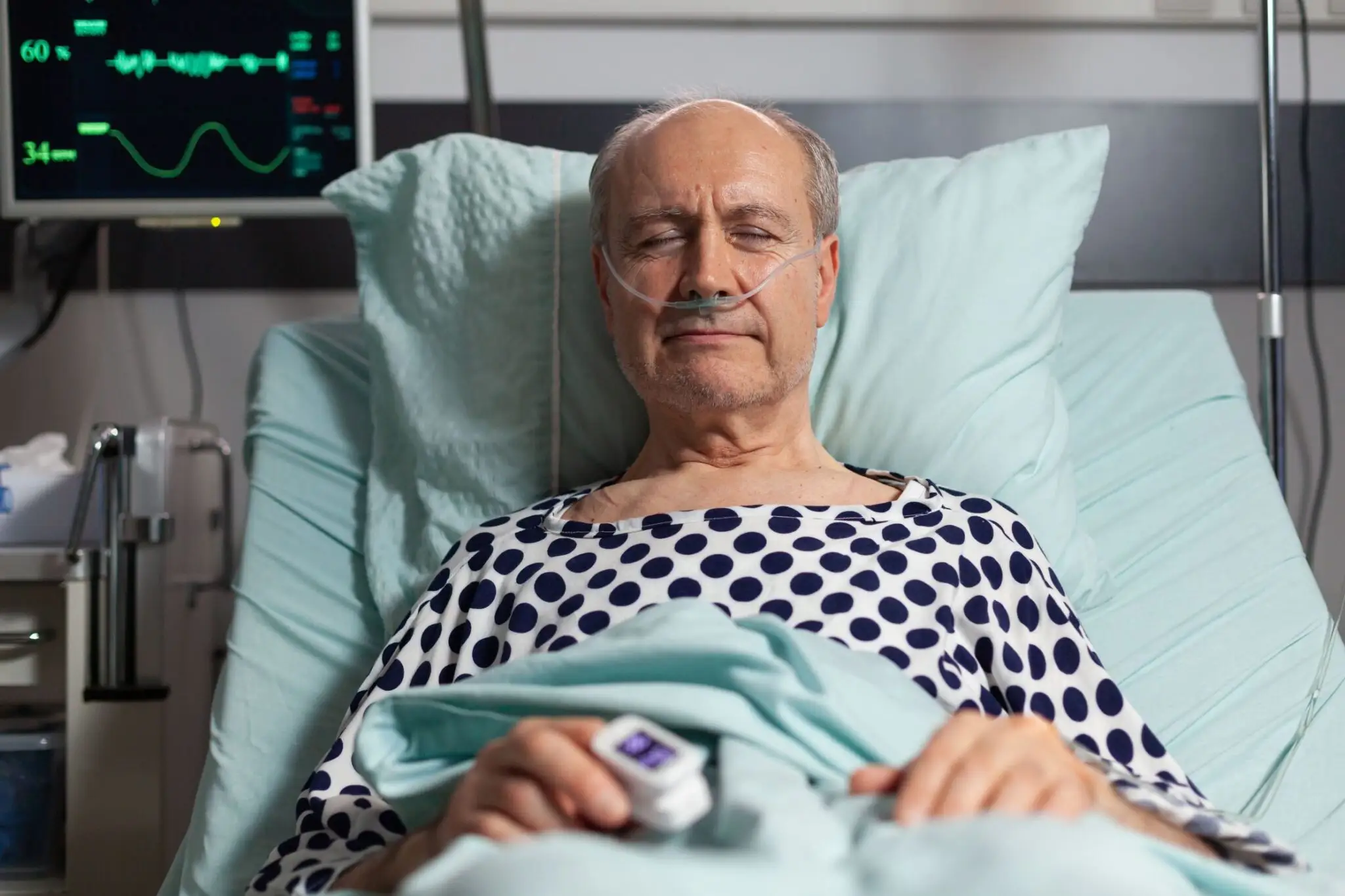Often affecting hospice patients in the last stages of life, terminal agitation is a kind of restlessness, anxiety, and confusion. For the patient and their family, it can be quite upsetting and a component of the complicated dying process. From physical restlessness to emotional outbursts, the agitation can manifest itself in several ways and occasionally turn into aggressive or violent behaviour. Also known as dying agitation or terminal restlessness, this disorder
Many times, terminal delirium also coexists with terminal agitation. The condition known as terminal delirium is confusion in which the patient might have hallucinations, disorientation, and extreme emotional pain. These actions convey the body's and the mind's struggle during the dying process. Family members and caregivers must realize that these actions are a normal decrease in bodily functions rather than under the control of the patient.
Though it can manifest early in the dying process, terminal agitation usually starts in the last days or hours of life. Early recognition of the symptoms enables families to seek the necessary medical advice and create more peaceful surroundings for their loved ones.
Common Symptoms of Terminal Agitation
Though individual patient-to-patient variations exist in the symptoms of terminal agitation, generally, they include both physical and behavioural indicators. Physically, patients might show mottled skin, a marbled look brought on by poor circulation. This usually starts on the legs and feet since the body gives core tasks top priority in the last stages of life. Common as the body gets ready for death are also low blood pressure and loss of appetite. Often accompanying these physical symptoms are behavioural ones that might be upsetting to observe.
Patients with terminal agitation could seem agitated, showing signs including repeatedly trying to get out of bed, picking at their bedding or clothes, or restless limb movement. Often indicators of inner conflict or uncertainty, these movements are Sometimes patients exhibit paranoia or become verbally hostile, which would be quite distressing for family members to see. Common in terminal agitation hospice treatment, this phase is when a patient's confusion and frustration cause them to become more agitated or even physically aggressive.
Cognitive decline is another accompanying sign of terminal agitation. Patients may get more anxious and agitated if they cannot identify familiar surroundings or relatives. Professional intervention becomes more crucial as these symptoms get more severe to give the patient relief and comfort for the family.
How Hospice Nurses and Palliative Care Teams Help

An important component of the treatment given by hospice nurses and palliative care teams is controlling terminal agitation. Trained to identify the symptoms of restlessness agitation, these experts act quickly to guarantee the patient's comfort. There are several responsibilities centered on medical management and on designing peaceful surroundings for the patient and their family.
Usually collaborating with the patient's medical team, the palliative care team prescribes and changes drugs to reduce symptoms, including anxiety and agitation before death. Carefully watched to prevent over-sedation while offering maximum comfort, these drugs could be sedatives, antipsychotics, or painkillers. When a patient is dying in agitation, these therapies can help them to feel much less uncomfortable and enable a more peaceful death.
Apart from providing medical treatment, the palliative team and hospice nurse are in charge of establishing a peaceful environment that supports rest. This can entail modifying the lighting, playing gentle music, and making sure the patient is physically comfortable by shifting their posture or adding comforting strokes. The objective is to lower outside stimuli that might aggravate agitation signs. Many times, simply the presence of a caring hospice professional will help a patient who is agitated to relax greatly.
Family members should be honest with the palliative care team regarding the symptoms of their loved one and should notify any behavioral changes right away. This helps the team to change their care strategies as necessary to guarantee the patient's best possible comfort.
Tips for Caring for a Loved One with Terminal Agitation

The physical and psychological toll a loved one experiencing terminal agitation causes can overwhelm family members providing care. Still, there are a few doable actions the patient can take to reduce her symptoms and foster a more serene surroundings.
Maintaining calm and peaceful surroundings comes first and most importantly. Cut as much noise and activity as you can if your hospice patient is experiencing anxiety or restlessness. Turn off radios or TVs, have quiet talks, and think about playing soft, comforting music. Dimming the lights will help you establish a more laid-back environment.
Another quite important consideration is physical comfort. Patients with terminal agitation could grow more restless because of physical discomfort, including pain or trouble breathing. Reducing signs of agitation can help your loved one meet their physical needs—that of cleanliness, comfort, and repositioning to prevent bedsores.
Furthermore, communication is essential. Even if your loved one seems unresponsive, talk to them in a calm voice. Sometimes, gentle, reassuring words help to ease anxious agitation. You should also keep in close touch with the palliative care team to discuss changes in symptoms or behaviour.
Finally, don't hesitate to contact a specialist should you discover that the agitation is becoming too difficult to control. Strong agitation, particularly when combined with uncertainty or hostility, could call for medical intervention to guarantee patient comfort.
When to Contact a Professional for Terminal Agitation

Managing terminal agitation requires knowing when to contact a specialist. See a hospice nurse or palliative care team if your loved one's symptoms grow intolerable or if their agitation gets worse. This is particularly true should terminal delirium symptoms—such as hallucinations, severe confusion, or a notable rise in restless agitation—show themselves.
Palliative care specialists are taught to modify drugs to lower agitation and give the patient's family emotional support as well. While sedatives can help to reduce physical restlessness, medications, including antipsychotics, can be used to calm a patient suffering extreme confusion. Additionally, the palliative care team is able to offer direction on handling the emotional components of tending to a loved one nearing the end of life.
Reaching out shouldn't wait until the circumstances seem intolerable. Early on, professional assistance is vital if you observe any notable behavioural changes or if the patient's suffering is getting too great. Contact a specialist to change care plans as necessary to guarantee the patient's comfort and the peace of mind of the family.
Key Points
For many hospice patients, terminal agitation is a distressing but normal component of the dying process. Managing this disorder depends on early recognition of the symptoms—such as mottled skin, low blood pressure, loss of appetite, and behavioural traits including restlessness or confusion. Providing the appropriate treatment and establishing a calm environment to help reduce terminal restlessness and terminal delirium depends critically on the function of the hospice nurse and palliative care team.
Families should be attentive to their loved one's needs and cooperate closely with the palliative care team to handle emotional and physical discomfort. Should the symptoms become too severe, it is advisable to contact a specialist to modify the treatment plan and guarantee the patient's maximum comfort during their last hours.
















.webp)




.webp)

.webp)

